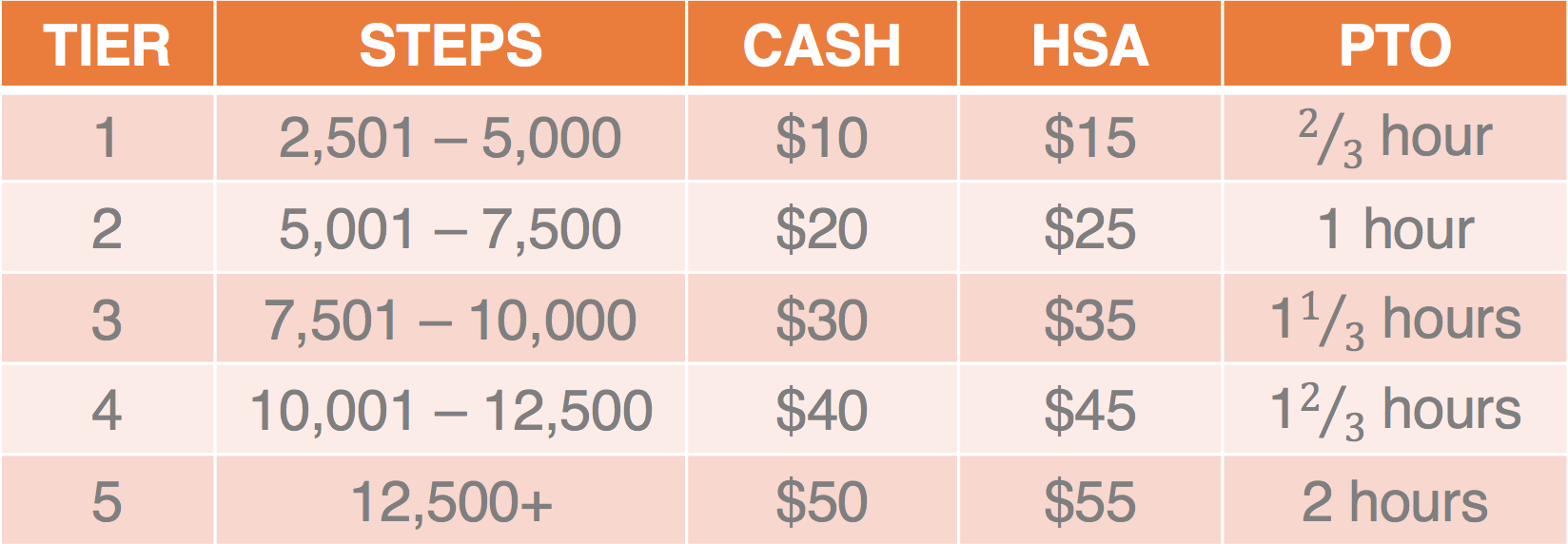When people think of wellness challenges, they often limit themselves to programs that have a defined start and end date like the typical six-week step challenge. While these programs are great, especially when multiple ones are offered throughout the year, they often have certain limitations. Most notably, these types of programs do not fully embrace a healthy lifestyle in that personal health and well-being doesn’t really take time off the way periodic challenges do. For employers who are more focused on cost containment rather than employee engagement, periodic challenges may not help them achieve their employee health goals. This is where continuous wellness programs can help.
Continuous wellness programs don’t have a defined start and end date – they are “active” all the time. For example, a continuous wellness program is one that has a challenge that runs every month or every quarter; the end of one challenge is the beginning of the next. These programs typically do not involve teams and often have larger reward budgets. Below are some best practices for structuring a rewards strategy for successful continuous wellness programs.
Timing Of Rewards
Behavioral economics suggests that individuals value rewards in the present more than equivalent rewards in the future. This is known as present bias. Research also suggests that delivering a reward as close to the completion of a given task strengthens the connection between the two. Despite the research, it is surprising to see that so many employers create programs that have employees complete activities over the course of a year and reward them at the end of the year. When running a continuous program, it is strongly encouraged to make reward delivery as frequent as possible. This will do a better job in making small accomplishments meaningful, increasing the value of rewards by addressing the present bias, and linking behaviors to the associated reward. These all are big wins for the employer and the employee.
While having daily rewards would be ideal, the administrative burden may make this too difficult to manage for employers. We suggest that reward delivery does not occur less frequently than monthly. To make this achievable for all employers, Wellable provides the tools, technology, and features to make this process hassle-free so employers do not have to take the pain of administration into consideration when delivering rewards.
Another benefit of frequent rewards is that it resets the clock for each program period. For example, in programs that reward at the end of the year, many employees who don’t start from day one feel like catching up is not attainable and decide to postpone participation to the following year. This comes at the cost of the employer and the employee. When a program resets every month, an employee always has opportune times to join the program without delay.
Diversity In Rewards
There are so many options for rewards these days, including gift cards, cash, paid-time off, premium differentials, health savings account (HSA) contributions, and more. It should come as no surprise that individuals value these rewards differently, and as such, the best way to optimize a wellness rewards program is to allow employees to choose the reward they most prefer and will be motivated by. It is also important to allow them to change their choice in the middle of the program because their preference may change.
Similar to the timing of rewards, employers often avoid creating diverse reward offerings because of the administrative burden it may present. This is why employers should rely on and expect their wellness vendor to eliminate the pain of offering elements of a program that are known to be effective. A quality wellness technology platform will be able to automate gift card delivery, delivery of files into payroll for cash and PTO prizes, etc.
Tiers In Rewards
Most wellness reward programs operate by delivering an incentive after an employee achieves a milestone or meets a goal. For many elements of a wellness program, these goals should vary from participant to participant. For example, having a single daily step or activity goal for each person is unreasonable. For some participants, the goal is too low to elicit any behavior change and for others it is so high that the employee decides it is not even worth participating.
To address this issue without creating unique goals for each user, employers should enact a tiered rewards program. To keep things simple, let’s assume steps are the only thing being tracked in the program and rewards are delivered monthly based on the average number of steps taken per day in a given month. Rather than creating a single step goal (e.g., 8,000 per day) that has a binary outcome (an employee surpasses it or not), employers should create tiers such as 2,500 average daily steps, 5,000 average daily steps, etc. that each have a reward tied to it. This accomplishes several things. First, employees at all levels will be compelled to participate because the first tier is attainable. Second, each time an employee crosses a tier, the next tier is within range, which will continue to motivate them to increase their activity level. In the 8,000 average daily steps model, there is no incentive for a person who crosses the threshold to keep working. In a tiered approach, everyone is motivated to reach the next tier.
Below is a sample rewards program that addresses all the best practices noted in this post. The rewards are paid frequently (monthly), employees can choose the prize that best motivates them, and the tiers encourages everyone to participate and improve incrementally.

Infographic













